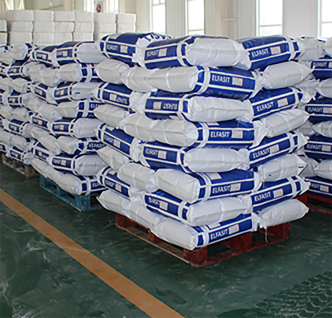
Agu . 10, 2024 00:05 Back to list
Exploring the Chemical Structure and Properties of Hydroxyethyl Cellulose for Various Applications
The Structure and Applications of Hydroxyethyl Cellulose
Hydroxyethyl cellulose (HEC) is a non-ionic cellulose ether that has gained significant attention in various industries due to its unique properties. As a modified cellulose, its structure and the modifications it undergoes make it an essential ingredient in products ranging from pharmaceuticals to personal care items, as well as in construction materials. This article will delve into the structure of hydroxyethyl cellulose and its diverse applications.
Structure of Hydroxyethyl Cellulose
Hydroxyethyl cellulose is derived from cellulose, which is a natural polymer made up of numerous glucose units linked by β-1,4 glycosidic bonds. The fundamental structure of cellulose consists of long chains of glucose repeating units, forming crystalline and amorphous regions. To synthesize hydroxyethyl cellulose, hydroxyl groups (-OH) on the anhydroglucose units of cellulose are modified by the introduction of hydroxyethyl groups (–CH₂CH₂OH) through a reaction with ethylene oxide.
This modification enhances the solubility of cellulose in water, allowing HEC to dissolve and form viscous solutions. The presence of hydroxyethyl groups increases the hydrophilicity of the cellulose molecule, which is critical for its functionality in various applications. The degree of substitution, which indicates the average number of hydroxyethyl groups attached per anhydroglucose unit, affects the properties of HEC such as its solubility, viscosity, and gel-forming ability. Generally, higher degrees of substitution result in better soluble derivatives and higher viscosity of the solutions.
Properties of Hydroxyethyl Cellulose
HEC exhibits several favorable properties, including high viscosity, ability to form gels, strong film-forming capacity, and stability in different pH ranges. One of the most significant characteristics of HEC is its extraordinary thickening ability, which is why it is widely used as a thickening agent in various formulations. Additionally, it is biodegradable and environmentally friendly, making it a top choice in sustainability-focused markets.
Applications of Hydroxyethyl Cellulose
hydroxyethyl cellulose structure

The versatile nature of hydroxyethyl cellulose leads to its utilization in an array of industries
1. Pharmaceuticals In the pharmaceutical industry, HEC serves as a binder, thickening agent, and stabilizer in formulations of tablets, gels, and suspensions. Its ability to modify the release of active ingredients makes it a valuable excipient in drug delivery systems.
2. Cosmetics and Personal Care HEC is commonly used in lotions, creams, shampoos, and other cosmetic products, where it acts as a thickener and emulsion stabilizer. It helps to enhance the texture of products, ensuring a smooth application and improving viscosity, which is crucial for the performance of personal care items.
3. Construction In the construction industry, HEC is employed in dry-mix mortars, plasters, and tile adhesives. It improves workability, adhesion, and water retention, thus ensuring that construction materials perform optimally.
4. Food Industry Hydroxyethyl cellulose is increasingly being used as a food additive to improve the texture and stability of food products, which is critical for enhancing consumer experience.
5. Agriculture HEC finds applications in agricultural products as a binder in fertilizers and as a viscosity-increasing agent in pesticide formulations, aiding in the controlled release of active ingredients.
Conclusion
Hydroxyethyl cellulose, with its unique structural attributes and functional properties, has solidified its role in numerous applications across varied industries. As a versatile and sustainable product, its demand is likely to grow as industries continue to seek environmentally friendly solutions that enhance product performance while meeting consumer expectations. As research continues to evolve regarding HEC and its capabilities, we will likely see even broader applications and innovations that further utilize this fascinating cellulose derivative.
-
Unlocking the Benefits of HPMC Products: A Gateway to Versatile Applications
NewsAug.07,2025
-
Unleashing the Potential of HPMC Ashland: A Comprehensive Look
NewsAug.07,2025
-
Tile Bonding Cellulose: The Key to Superior Adhesion and Durability
NewsAug.07,2025
-
Hydroxypropyl Methylcellulose Powder: The Versatile Component in Modern Pharmaceuticals
NewsAug.07,2025
-
Hydroxyethyl Cellulose: The Versatile Solution for Various Industries
NewsAug.07,2025
-
Hydroxyethyl Cellulose (HEC): The Versatile Polymer for Various Applications
NewsAug.07,2025







